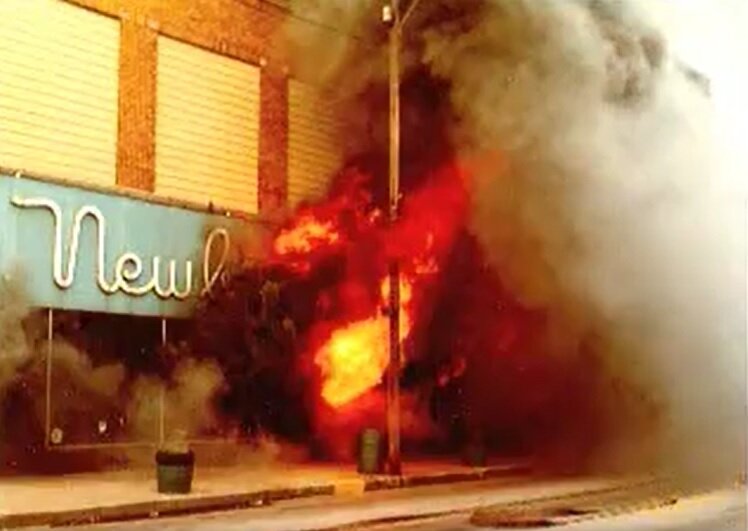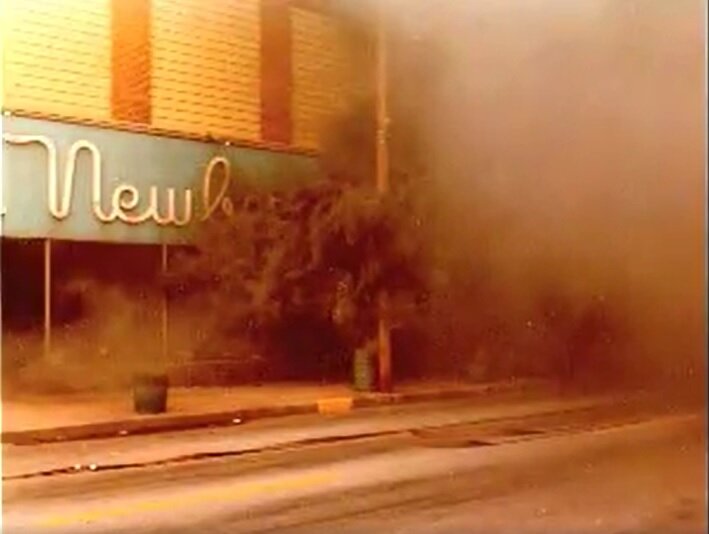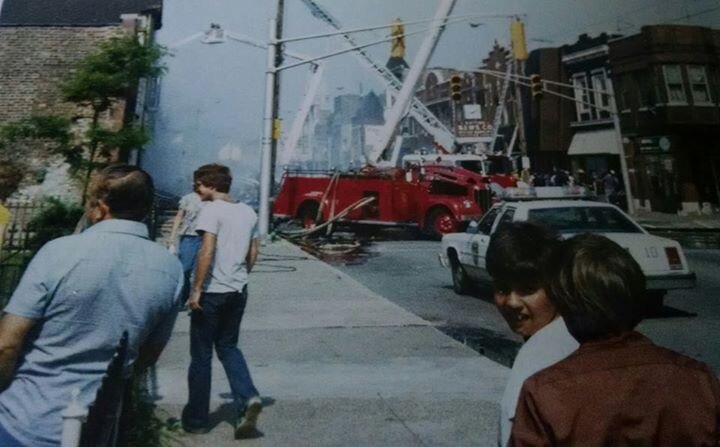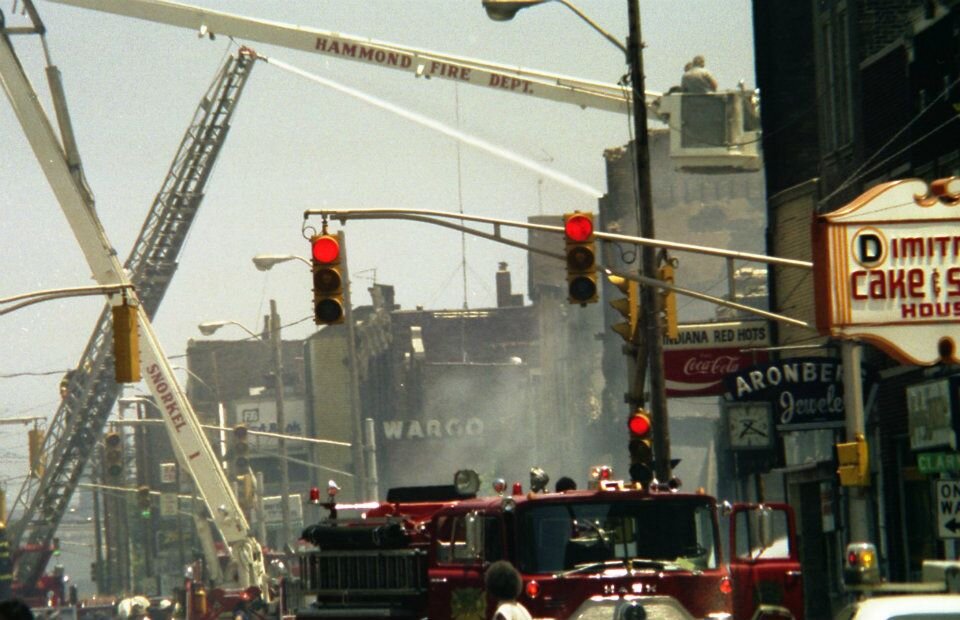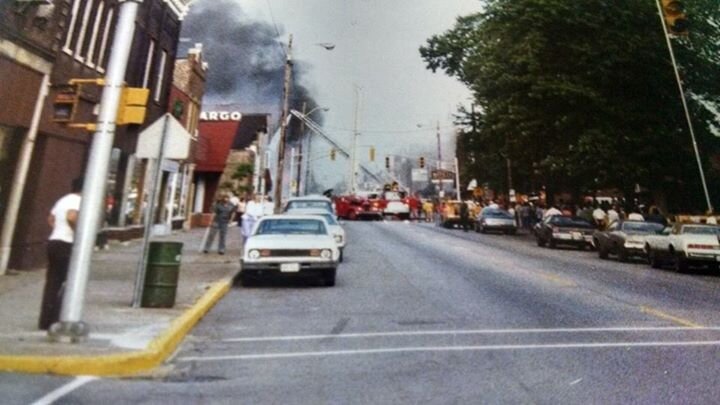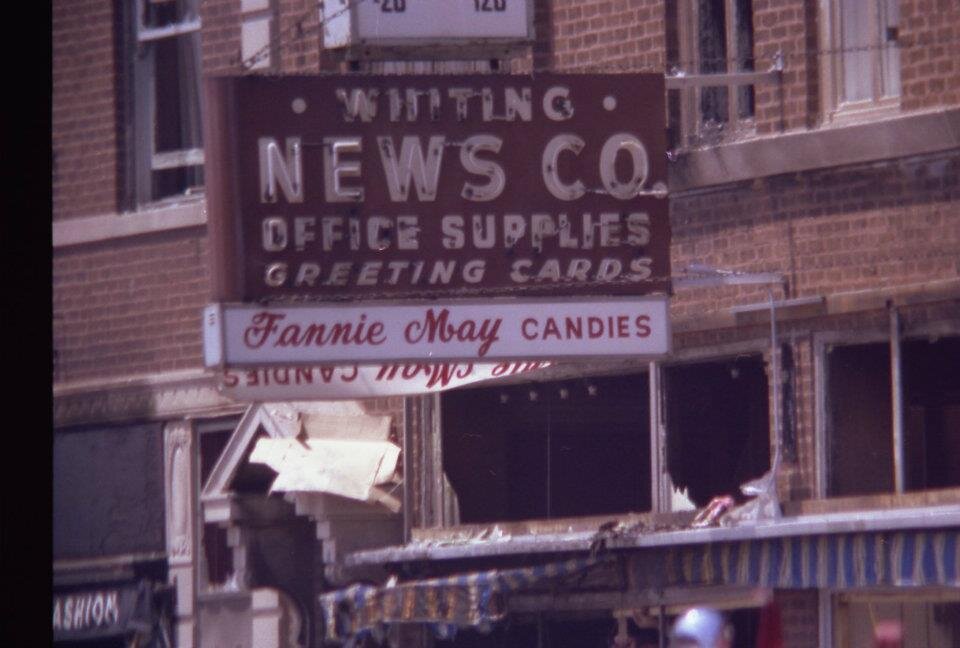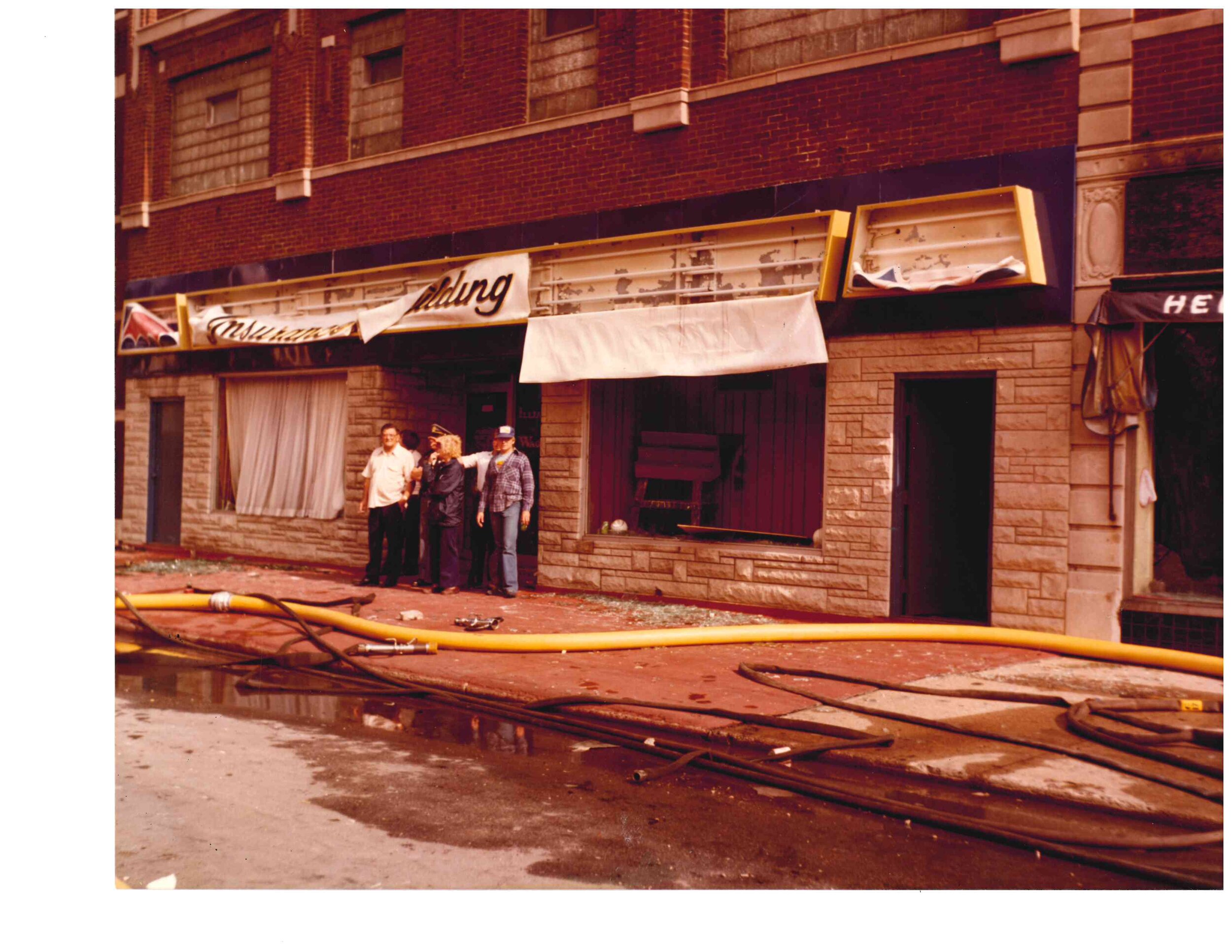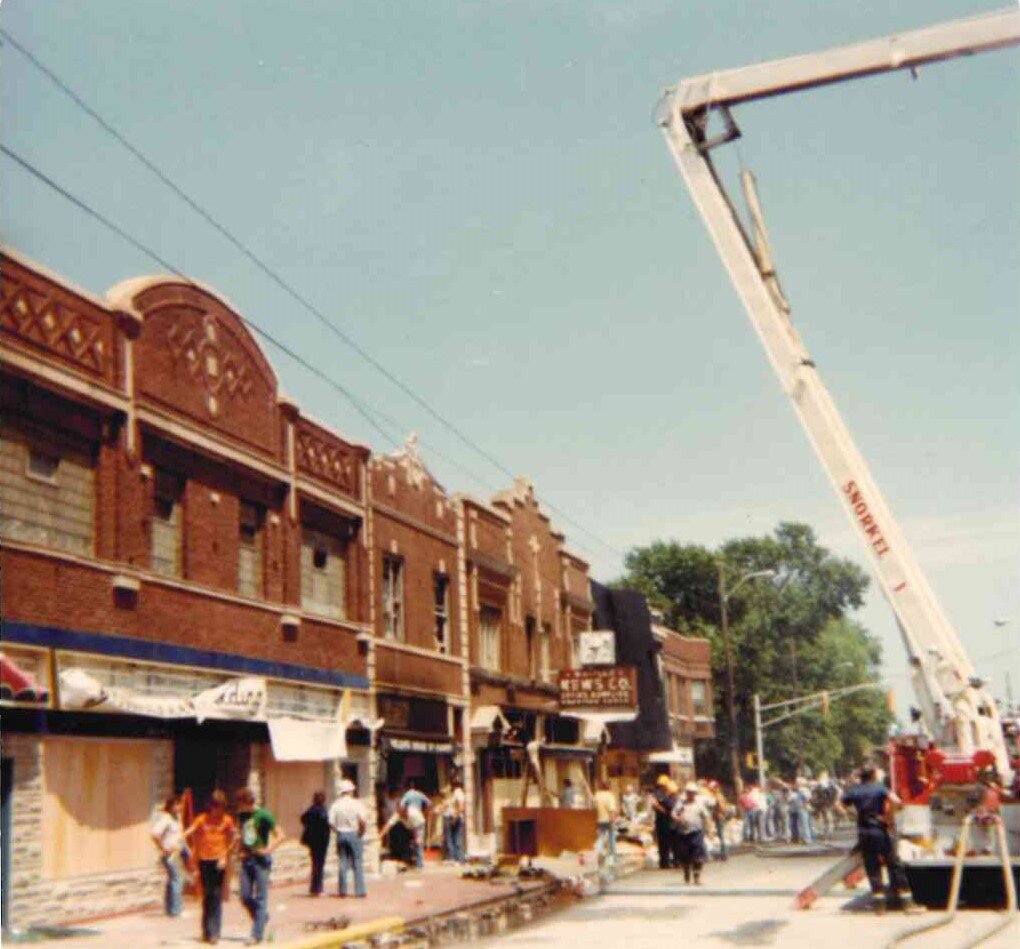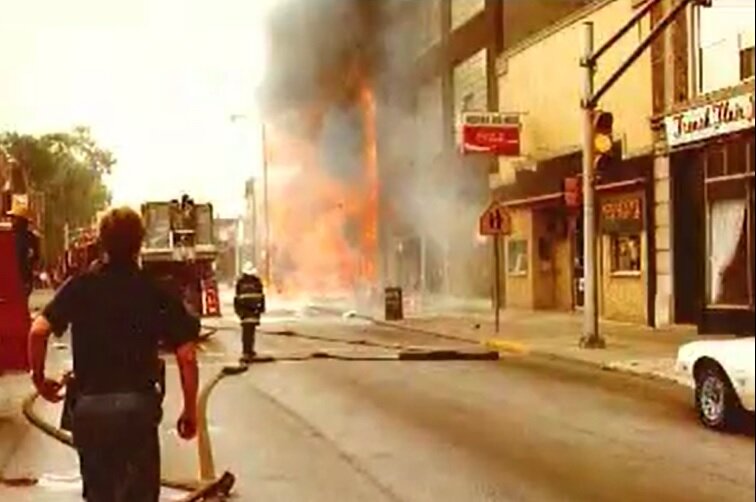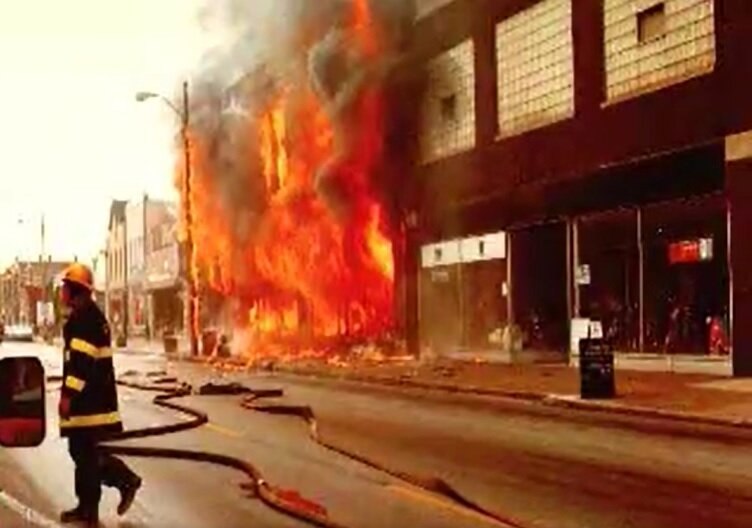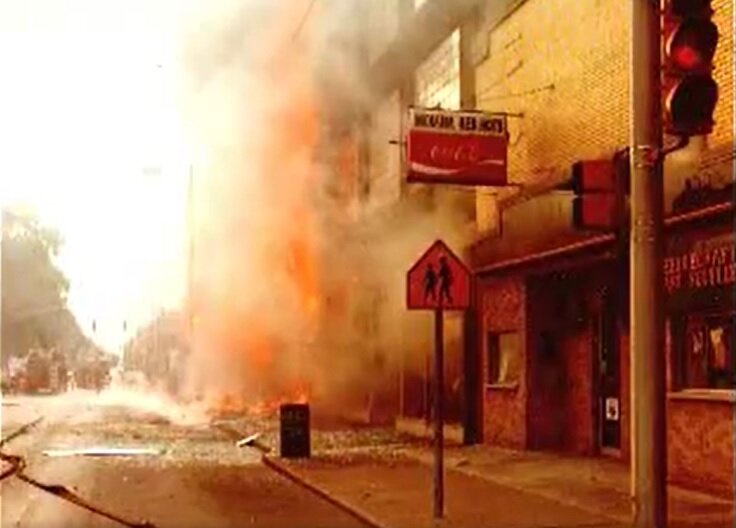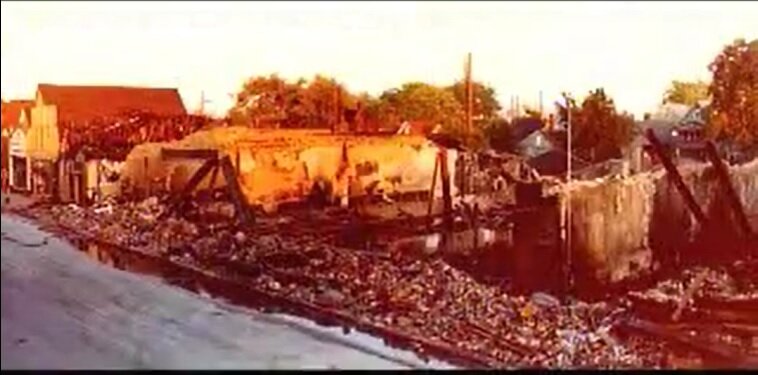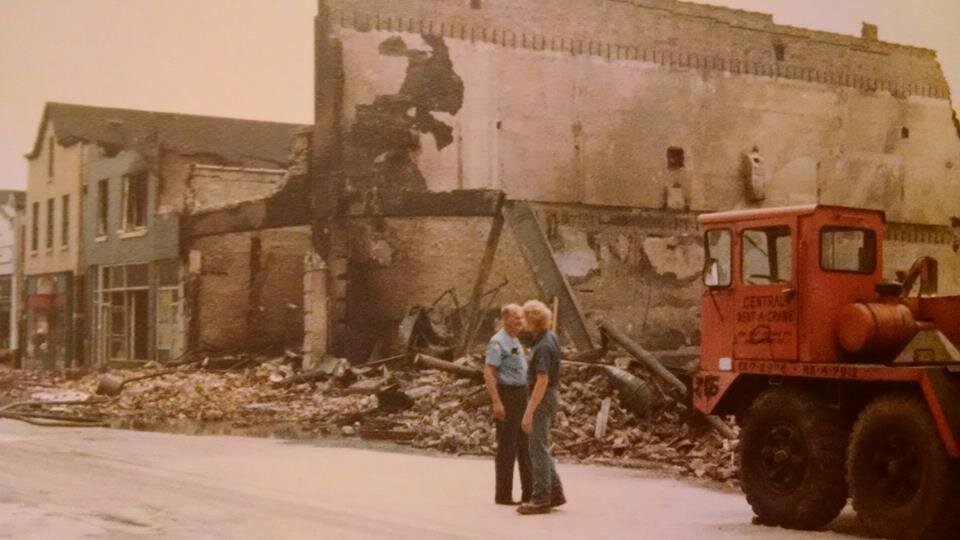J. J. Newberry Fire
Anthony Borgo
April 2021
The Summer of 1980 was one to be remembered in the city of Whiting. The circus came to town, magician George Semancik broke a World Record, and a major motion picture was filmed in town. However, the fire on July 6th forever changed the landscape of 119th Street.
According to the January 1, 1981 issue of The Calumet Day, “It was two days after the city’s Fourth of July Parade, and the only fire to be found was the spark of patriotism lighting the festive spirits of Whiting’s townsfolk. But there was a spark - indeed a very real fire raging right in the heart of the city.”
July 5th and 6th proved to be a busy 24-hours for Whiting’s fire brigade. Weary firemen had just returned to their firehouse after battling a blaze in the 1200 block of Indianapolis Blvd. From 10:26 p.m. Saturday until 4:35 a.m. Sunday Whiting’s firemen were tackling a fire at a 14-unit apartment building. The department only had an hour and a half until the second alarm sounded.
It was near dawn on a Sunday morning, when the blaze started in Newberry’s 5 & 10. By noon most of the south side of the 1400 block of 119th street was reduced to ash and rubble. According to the Calumet Day previously mentioned, “When Whiting residents awoke to the sight of billowing smoke and the reeking smell of charred wood and plaster, the festive spirit (of Independence Day) melted like the wax candles inside Friends’ Hallmark.”
As the inferno reached its peak, firefighters from five departments - Whiting, Hammond, East Chicago, Amoco and Calumet City battled the blaze. At its peak approximately 175 firemen, eight fire engines and three snorkel units were at work on the fire. According to resident Nancy Baranowski, “Many people may say our police and fire departments are Mayberry RFD. No way. With the help that was unbelievable it seemed like a smooth operation.” But, the ladder and engine men were not the only people attacking the conflagration.
Even as the firefighters from across the region fought the scorching flames, many Whiting residents chose to become an active participant of the crusade to save their downtown. Rather than allowing themselves to fall into the depths of apathy and indifference, they chose another path. Citizens united offering assistance to firefighters wherever they could, whether that meant pulling down a wall or passing out refreshments. Even some of the proprietors untouched by the fire provided drinks and other necessities to keep the work of squelching the flames going.
According to a July 13, 1980 Calumet Day editorial, “As the irritating stench of blackened smoke clouds filled the air, Whiting residents flocked to help the overworked firemen. As if part of the firefighting force, they helped firemen tear down flimsy storefronts and clear rubble, as well as direct traffic and keep the curious ones off the street.”
It was estimated that the fire that destroyed or damaged nine businesses caused losses in excess of $1.9 million. Whiting Fire Chief Thomas Justak and Indiana Fire Marshall, William Goodwin believed that the fire was a result of an electrical malfunction. According to an investigation conducted, “The probable cause was an electrical short in the J. J. Newberry Co.” The flames quickly spread to adjacent stores and even buildings across the street.
The building at 1404 119th Street also saw significant damage but it was not a total loss. The roof of Indiana Red Hots and Needlecraft collapsed from the heat. In addition, a nearby sewing shop was also damaged. Flames from the conflagration jetted 30 yards across the street engulfing the offices of the Whiting News Company. The windows of two other businesses - Wagner’s Insurance and Helen’s House of Fashion - burst as the inferno intensified. Tom Wagner arrived at the scene shortly after the blaze started when his building’s burglar alarm sounded. “It seemed like there was fire all over, and the heat was so intense one of the fire engines started burning.”
As a result of the searing heat, telephone lines were also damaged, knocking out service to over 600 Whiting homes. Residents of the few apartments over the storefronts were quickly evacuated and no injuries were reported. According to Whiting Fire Captain Jim Justak, “It was so hot that we had trouble touching door knobs across the street from Newberry’s when we were evacuating people. Keys literally melted in locks.”
The businesses that were directly affected by this tragedy were Newberry’s, Friend’s Hallmark, Kathy Winsberg’s Arts and Crafts, Hadj Schwinn bicycle shop and Mama’s Tacos. Although the fire was a devastating blow to the community not all of the proprietors threw in the towel. Friend’s Hallmark eventually relocated to 1333 119th Street; Hadj Schwinn opened up a new shop on Indianapolis Blvd. and years later Kathy Winsberg returned to 119th Street opening Full Circle Art.
Carol Jacobson and Pat Hansen, owners of Friends’ Hallmark, just had their grand opening the day before the blaze. Although the business had been operating since April, only recently had they acquired the Hallmark franchise. The business was previously called Kaleidoscope. The two women watched as the flames devoured their shop. Jacobson lamented, “We watched it go down. It was just like going to a funeral.”
Ten days after the Rivera family opened up Mama’s Tacos, the fire ravaged downtown Whiting. The owners had not yet gotten insurance for their business and in the process lost $17,000 in damages. With loans from friends and the help from the 10 brothers and sisters, it looked like their dream would literally rise from the ashes. Two months after seeing their business at 1420 119th Street destroyed, the Rivera family planned to reopen at 1532 119th Street. Gil Rivera stated, “There was no doubt in my mind we’d reopen. We had to get back the loss we suffered. It’s like falling off a horse - you’ve got to get right back on again.”
However, the Riveras plans eventually changed. Gil Rivera accused Whiting city officials with harassment. He stated that some city officials didn’t want Latino owned business within the city limits. According to city councilman, Rudy Wunder, Rivera tried to enter his burned out business after it was ordered off limits by the state fire marshal. Wunder stated that he could relate to what the owner of Mama’s Tacos was going through but you still have to follow orders. “I don’t call that harassment but I can understand his feelings.”
One of the business owners affected by the fire filed a negligence claim in the U.S. District Court. Hammond attorney Frank Galvin, filed the suit on behalf of Whiting Betterment Corporation. The corporation alleged that the J.J. Newberry Company negligence led to the fire and loss. Galvin stated that his client had hired an independent investigator to determine the exact cause of the blaze.
On July 29, 1980 the Small Business Administration in conjunction with Indiana Governor Otis Bowen declared the 1400 block of 119th Street a disaster area. The ruling allowed the victims of the July 6 inferno the eligibility to apply for low-interest loans. Business owners had 60 days to apply for loans at 3 percent to 8.25 percent interest to cover the uninsured physical losses. Uninsured losses were approximately $165,000. Residential loans were also offered to the apartment dwellers who lost their possessions in the blaze.
Business owners were not the only individuals impacted by the July inferno. Vivian Shade, Wanda & Jerry Hopson, and Becky Prentice all lost their homes to the blaze. Shade stated, “It’s amazing what some people will do for you.” The Shades received donations from residents, the Red Cross, the Salvation Army and members of the First Church of Christ located in Whiting. Likewise, Prentice also commented on the generosity of the Red Cross. “I was really surprised. I had no idea the Red Cross would do something like this. Believe me, it really helped.”
Bonnie Wright of the East Chicago Red Cross stated, “Our survey has 10 families who actually suffered a loss, five of which lost everything.” The Red Cross estimated that over $2000 was spent on food, clothing, rent and furniture. The homeowners agreed that the hardest part of this tragedy was losing all the things with sentimental value. Wanda Hopson said that the whole ordeal was like a nightmare. “Everytime I hear a siren, I panic. You work so hard for everything and it’s gone in 20 minutes.”
The story of the burned up block was reported throughout the state. The Logansport Pharos Tribune, as well as, the Rushville Republican covered the conflagration. In addition, the story reached as far as Wisconsin, where it was reported in the Kenosha News.
After months of negotiations with the Whiting-Robertsdale Chamber of Commerce and a Chicago-based developer, G & H Development Corp., a Walgreen Drug Store and a York clothing store was constructed to fill the void on 119th Street that the fire left in its wake. In addition, after numerous letters and long hours of negotiating with Newberry’s parent company, a McCrory store opened down the block in a new 68,000 square-foot outlet.
To residents of large metropolises a fire destroying a block may not seem that damaging. However, in Whiting, the destruction during the Summer of 1980 was devastating. Nancy Barnaowski summed it up best. “Our fire was surely a disaster. Newberry's was the watering hole for shopping, getting together at the snack counter, meeting people maybe you haven’t seen in a while. This was the place! And now it's gone.”

